Trabecular bone organoids: a micron-scale 'humanised' prototype designed to study the effects of microgravity and degeneration
- PMID: 34021163
- PMCID: PMC8140135
- DOI: 10.1038/s41526-021-00146-8
Trabecular bone organoids: a micron-scale 'humanised' prototype designed to study the effects of microgravity and degeneration
Abstract
Bone is a highly responsive organ, which continuously adapts to the environment it is subjected to in order to withstand metabolic demands. These events are difficult to study in this particular tissue in vivo, due to its rigid, mineralised structure and inaccessibility of the cellular component located within. This manuscript presents the development of a micron-scale bone organoid prototype, a concept that can allow the study of bone processes at the cell-tissue interface. The model is constructed with a combination of primary female osteoblastic and osteoclastic cells, seeded onto femoral head micro-trabeculae, where they recapitulate relevant phenotypes and functions. Subsequently, constructs are inserted into a simulated microgravity bioreactor (NASA-Synthecon) to model a pathological state of reduced mechanical stimulation. In these constructs, we detected osteoclastic bone resorption sites, which were different in morphology in the simulated microgravity group compared to static controls. Once encapsulated in human fibrin and exposed to analogue microgravity for 5 days, masses of bone can be observed being lost from the initial structure, allowing to simulate the bone loss process further. Constructs can function as multicellular, organotypic units. Large osteocytic projections and tubular structures develop from the initial construct into the matrix at the millimetre scale. Micron-level fragments from the initial bone structure are detected travelling along these tubules and carried to sites distant from the native structure, where new matrix formation is initiated. We believe this model allows the study of fine-level physiological processes, which can shed light into pathological bone loss and imbalances in bone remodelling.
Conflict of interest statement
The authors declare no competing interests.
Figures
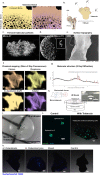


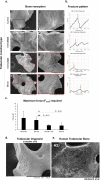
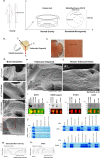
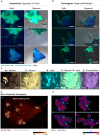
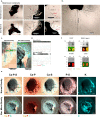
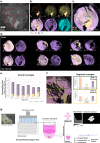
Similar articles
-
Microgravity induces pelvic bone loss through osteoclastic activity, osteocytic osteolysis, and osteoblastic cell cycle inhibition by CDKN1a/p21.PLoS One. 2013 Apr 18;8(4):e61372. doi: 10.1371/journal.pone.0061372. Print 2013. PLoS One. 2013. PMID: 23637819 Free PMC article.
-
A stochastic analysis of iliac trabecular bone dynamics.Clin Orthop Relat Res. 1986 Dec;(213):264-78. Clin Orthop Relat Res. 1986. PMID: 3780102
-
Osteoclastic and Osteoblastic Responses to Hypergravity and Microgravity: Analysis Using Goldfish Scales as a Bone Model.Zoolog Sci. 2022 Aug;39(4). doi: 10.2108/zs210107. Zoolog Sci. 2022. PMID: 35960027
-
Tissue Engineering Under Microgravity Conditions-Use of Stem Cells and Specialized Cells.Stem Cells Dev. 2018 Jun 15;27(12):787-804. doi: 10.1089/scd.2017.0242. Epub 2018 Mar 29. Stem Cells Dev. 2018. PMID: 29596037 Review.
-
Biomanufacturing of 3D Tissue Constructs in Microgravity and their Applications in Human Pathophysiological Studies.Adv Healthc Mater. 2023 Sep;12(23):e2300157. doi: 10.1002/adhm.202300157. Epub 2023 Aug 7. Adv Healthc Mater. 2023. PMID: 37483106 Review.
Cited by
-
Modelling skeletal pain harnessing tissue engineering.In Vitro Model. 2022;1(4-5):289-307. doi: 10.1007/s44164-022-00028-7. Epub 2022 Aug 4. In Vitro Model. 2022. PMID: 36567849 Free PMC article. Review.
-
Physiological cell bioprinting density in human bone-derived cell-laden scaffolds enhances matrix mineralization rate and stiffness under dynamic loading.Front Bioeng Biotechnol. 2024 Feb 14;12:1310289. doi: 10.3389/fbioe.2024.1310289. eCollection 2024. Front Bioeng Biotechnol. 2024. PMID: 38419730 Free PMC article.
-
Hydrogels and Bioprinting in Bone Tissue Engineering: Creating Artificial Stem-Cell Niches for In Vitro Models.Adv Mater. 2023 Dec;35(52):e2301670. doi: 10.1002/adma.202301670. Epub 2023 Nov 2. Adv Mater. 2023. PMID: 37087739 Free PMC article. Review.
-
Organoids as Innovative Models for Bone and Joint Diseases.Cells. 2023 Jun 8;12(12):1590. doi: 10.3390/cells12121590. Cells. 2023. PMID: 37371060 Free PMC article. Review.
-
Advance in the application of organoids in bone diseases.Front Cell Dev Biol. 2024 Sep 3;12:1459891. doi: 10.3389/fcell.2024.1459891. eCollection 2024. Front Cell Dev Biol. 2024. PMID: 39291264 Free PMC article. Review.
References
Grants and funding
LinkOut - more resources
Full Text Sources
Other Literature Sources

